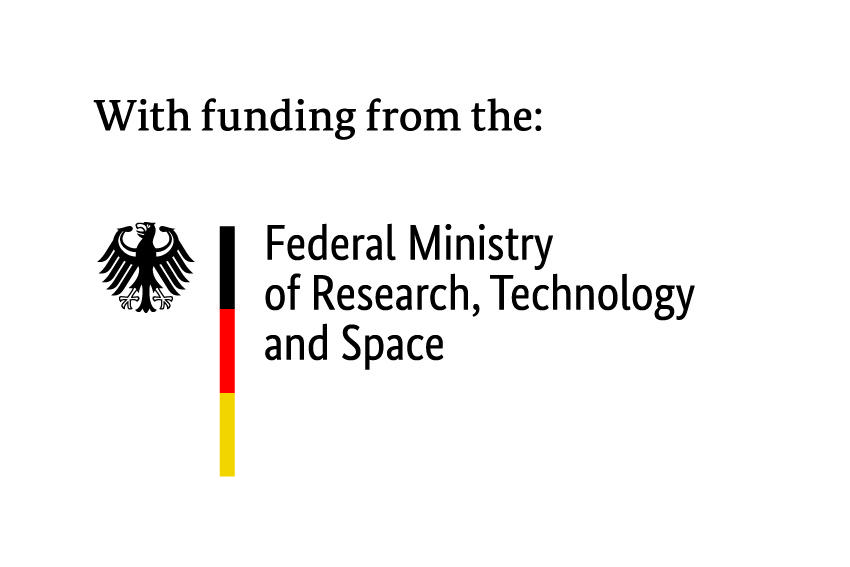AMAREX – Adaptation of stormwater management to extreme events

Brief description
The negative effects of climate change-related weather extremes are especially high in cities and urban areas. High grades of surface sealing and building densities aggravate the risks of flooding due to heavy rainfall and the incidence of urban heat island effects.
AMAREX investigates opportunities for adapting stormwater management with blue-green infrastructures (BGI) and rainwater management measures (RWB) to increasing extremes of heavy rain, drought and heat as key contributions to climate change adaptation. Additionally, the impaired urban water balance is reviewed as a key assessment indicator for water extremes.
It is investigated how RWB measures can be functionally extended by additional storage areas for pluvial flood prevention (RWB+) or for use / irrigation as drought prevention (RWB+N). For this purpose, evaluation methods for the implementation potentials (conflicts, synergies) and impact quantification of these measures will be developed and transferred into a web-based planning tool for municipal application. As a crucial element in integrated planning processes, it is intended both to promote cross-sectional interaction between urban planning, open space and infrastructure planning and to serve as a public relations tool. The approaches and tools are being developed in close cooperation with the partner cities Cologne and Berlin.
Objectives
The overall objective of AMAREX is to develop methods that enable the adaptation of stormwater management concepts to the extreme events of heavy rain, heat and drought at the municipal level.
The methods will be combined in a descriptive web tool and provided to municipal stakeholders as an information, communication and decision-supporting tool. The planning tool enables to pursue different objectives (flood prevention, heat and drought prevention, water balance) in an integral and closely coordinated process and to combine this with reliable impact assessments (technical, socio-economic) for different planning scenarios.
For this purpose, the development of methods is based on selected pilot areas in Cologne and Berlin. With this anchorage at the municipal level from the beginning a continuous development dialogue between the scientifically based elaboration and the later practice-related application on the part of the municipalities is ensured.
Working packages (WP)
This work package comprises the coordination of the joint project and all public relations measures. This includes in particular the supporting participation in the networking and transfer project Aqua-X-Net of the funding measure WaX by the Federal Ministry of Education and Research (BMBF), the provision of a AMAREX website as well as national and international publications of essential project results.
To reach the goal of useable and practical digital tools real world experience needs to be addressed. Through an accompanying stakeholder dialogue with municipal partners and planning offices technical and user requirements will be included in the development process of the digital tools. Mutual tests of the tools in Berlin and Cologne ensure their transferability to other municipalities.
Work package 2 investigates effects and impacts of functionally extended RWB elements (RWB+) as well as multifunctionally used urban spaces (MUR) for pluvial flooding prevention. It consists of the following work steps:
- System analysis for different decentralized RWB elements regarding their technical expandability to RWB+ elements.
- Methodology: GIS-based areal screening as estimation of the application potential of RWB+ elements in new design and existing planning (case study).
- Impact analysis of blue-green elements by means of 1D/2D dual drainage simulation (case study) with result validation.
In work package 3, a system analysis is carried out for RWB-N systems (rainwater management systems that are expanded to include a storage function) and a GIS-based screening procedure is applied to analyse the potential for these facilities. Furthermore, a rainwater storage and green element irrigation system will be set up to investigate necessary irrigation water quantities and qualities. The available quality of surface run-off from different source areas will be analysed. Finally, the preceding steps are validated with an EASB model (catchment, treatment, storage and supply model).
Work package 4 develops a web-based tool to represent the effects of stormwater management on climate impacts in cities as simplified maps. The tool aims at supportimg cities in taking into account climate adaptation in strategic and actual urban planning. The deviation oft he long-term urban water balance from a natural state is examined as a potential indicator for climate adaptation.
Work package 5 develops a socio-economic assessment method for rainwater and green infrastructure measures, based on stakeholder needs. It includes:
- Development of a multi-criteria analysis for the assessment of rainwater and green infrastructure activities and methods to evaluate selected cost and benefit components.
- Preparation of a tool for socio-economic assessments, tested in the pilot areas in Cologne and Berlin.

Coordinator:
Prof. Dr. Ulrich Dittmer
TU Kaiserslautern
Partner Institutions:
- University of Stuttgart – Institute for Sanitary Engineering, Water Quality and Solid Waste Management
- Kompetenzzentrum Wasser Berlin gemeinnützige GmbH
- Berliner Wasserbetriebe, AöR
- Ecologic Institute Nonprofit GmbH, Berlin
- Technologiestiftung Berlin
- HELIX Pflanzensysteme GmbH, Kornwestheim
- Stadtentwässerungsbetriebe Köln, AöR
Project period:
01.02.2021 – 31.01.2025


